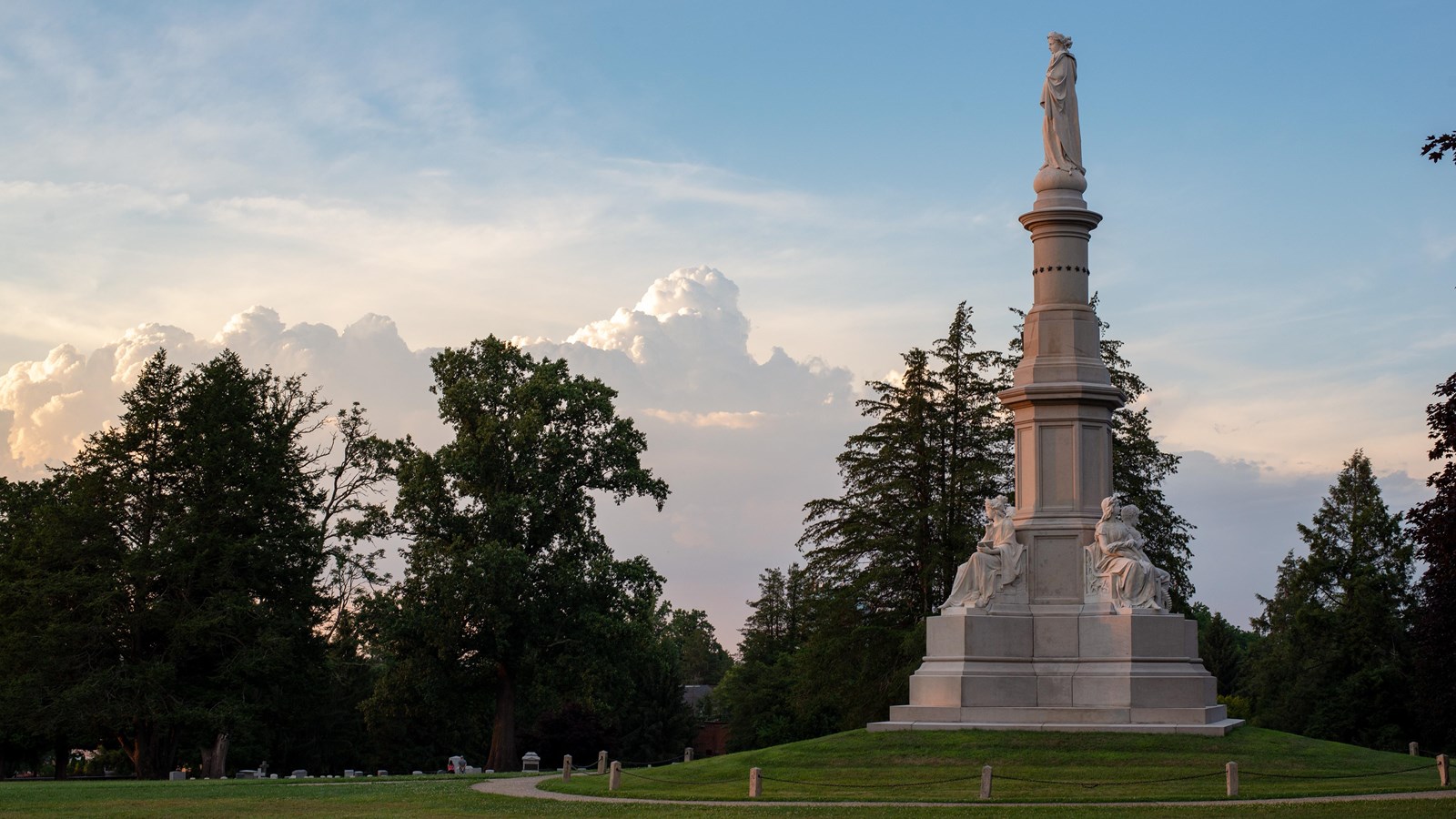Last updated: September 23, 2022
Place
Soldiers' National Monument

NPS Photo
Quick Facts
Location:
Gettysburg National Military Park
Significance:
The Gettysburg Address
Designation:
Civil War Monument
The Dedication of the Cemetery, the Gettysburg Address, and the Soldiers' National Monument
The Soldiers’ National Monument, long misidentified as the spot from which Lincoln spoke, honors the fallen soldiers. The figures of War (the soldier), Clio, the Muse of History (represented by the woman writing upon the tablet), Plenty (woman holding a sheaf of wheat) and Peace (the mechanic) surmount the base, while the figure of Liberty mourning her dead appears on the pedestal. It was actually on the crown of this hill, a short distance on the other side of the iron fence and inside the Evergreen Cemetery, where President Lincoln delivered the Gettysburg Address to a crowd of some 15,000 people.
3D models of the entire Soldiers' National Monument, including all five of the statues, is available on the National Park Service, Heritage Documentation Programs website.
The cemetery was officially dedicated on November 19, 1863 “by appropriate and imposing ceremonies,” which included the deliverance of Lincoln’s Gettysburg Address, following Mr. Everett’s sweeping and eloquent two-hour oration. As Lincoln composed his most famous speech in the days leading up the ceremony, both in the White House in Washington, D.C. and at David Will’s home the night before, he well understood the difficult task before him.
Facing bitter and mounting opposition to his emancipation policy and the war itself, the President saw his remarks at Gettysburg as an opportunity to help define for the nation what was at stake in the war and why a Union victory was crucial. He also understood the grief that many felt who had lost sons, fathers and friends in the battle. He struggled with his own personal bereavement, having recently suffered the death of his much-loved 11 year-old son “Willie” in 1862. He hoped his brief remarks might impart a deeper meaning to the nation’s enormous sacrifice.
President Lincoln’s address that afternoon lasted only about two minutes. Afterward, Edward Everett wrote the President, “I should be glad, if I could flatter myself that I came as near to the central idea of the occasion, in two hours, as you did in two minutes.”
In his address Lincoln attempted to make the nation realize the significance of the war, for he saw it not only as the great test of whether democracy could survive (“a great civil war, testing whether…any nation, so conceived and so dedicated, can long endure”), but also as an opportunity to redeem the ultimate goal of the founding fathers (“…that all men are created equal”). Thus, the Gettysburg Address was actually Lincoln’s attempt to rededicate the nation to finishing the war (“to be here dedicated to the great task remaining before us”), and also to define its larger meaning, (“that this nation, under God, shall have a new birth of freedom….”).
Together the monuments like this one, markers, memorials, and individual graves contained within the ground of the Gettysburg National Cemetery serve as a reminder of the devotion to country and the sacrifice Americans have given, and may be called on to give, to ensure the freedoms we enjoy today.
The Gettysburg National Cemetery, and Annex, closed to new interments in 1972.
